Inflight Magazine of Brussels Airlines
Welcome to the Inflight Magazine of Brussels Airlines
Full of beans
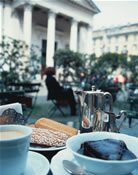 Café culture is more deeply ingrained in Torinese daily life than in any other Italian city. Morwenna Ferrier wakes up and smells the coffee
Café culture is more deeply ingrained in Torinese daily life than in any other Italian city. Morwenna Ferrier wakes up and smells the coffee
Aquick glance at the laminated sign pinned up outside Caffè Torino (204 Piazza San Carlo, tel. ) gives a stark warning about the dangers of excess. The guidance chart for the recommended daily intake of alcohol might look incongruous outside a café on a bright morning in Turin’s Piazza San Carlo, but for many Torinese, a slug of grappa in their morning espresso is essential – Italians talk about ‘correcting’ their coffee with it.
Welcome to Turin. Mention this Francophilic city and most people think of shrouds or Fiat. History buffs may go so far as to recollect its monarchical past as the former capital of northern Italy, while foodies will probably reel off a list of famous Piedmontese products – grissini (breadsticks), Nutella and the whole Slow Food movement, since you ask.
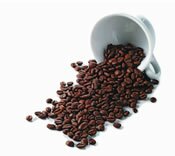 But quiz anyone on the street about Turin’s attempts to become a burgeoning cultural epicentre and they’ll respond with a shrug. When the Winter Olympics were held here two years ago, tourism initially increased by 60%. But most visitors still bypass the city, opting for affluent Milan. Which is a shame. Turin is not only cheaper, but also the birthplace of Italian café culture.
But quiz anyone on the street about Turin’s attempts to become a burgeoning cultural epicentre and they’ll respond with a shrug. When the Winter Olympics were held here two years ago, tourism initially increased by 60%. But most visitors still bypass the city, opting for affluent Milan. Which is a shame. Turin is not only cheaper, but also the birthplace of Italian café culture.
It has the largest number of cafés per capita in Italy, four of which gastronomic bible Gambero Rosso has deemed to be among the country’s 18 best cafés – no other city has more than one. What sets wood décor, and it’s an effort that’s best appreciated in winter. That Turin has any traditional cafés left is a miracle, given how heavily bombed it was in World War II. Caffè San Carlo (156 Piazza San Carlo, ) was so badly hit in 1943 that its five rooms became one. It was here that café culture (not to mention the country itself) was born.
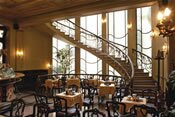 At one stage, Italy was divided into several kingdoms, some under ‘foreign’ rule. When secret discussions began in the 19th century to create a unified and independent Italy, they took place beneath these very chandeliers. Some historians, including my guide, believe that, without the ubiquity of these cafés, the country would still be split.
At one stage, Italy was divided into several kingdoms, some under ‘foreign’ rule. When secret discussions began in the 19th century to create a unified and independent Italy, they took place beneath these very chandeliers. Some historians, including my guide, believe that, without the ubiquity of these cafés, the country would still be split.
If you want to take a closer look at Turin’s history, a hike up the hill to the Basilica di Superga is a fine starting point. Beyond the Juventus players’ gilded villas, this architectural giant in a bucolic setting is well worth the gradient. It’s the vertiginous view from the church, teetering on the edge of a hill overlooking the River Po, that you’re after. The vast grid of baroque palaces and piazzas, many designed by Filippo Juvarra in the middle of the 19th century, roughly tumble into the medieval backstreets to the north of the city.
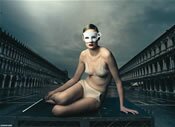 From here, make your way back down to the city’s formal centre. La Stampa, Italy’s third most popular daily newspaper, has its headquarters near Via Roma, Turin’s answer to Brussels’ Avenue Louise. Journalists loiter under the smoky leather ceiling at Caffè Mulassano (15 Piazza Castello, tel. ) sipping cappuccinos. The rules here are stringent: grappa before lunch and no milk after 11am – get your head around it or face scornful looks from the locals.
From here, make your way back down to the city’s formal centre. La Stampa, Italy’s third most popular daily newspaper, has its headquarters near Via Roma, Turin’s answer to Brussels’ Avenue Louise. Journalists loiter under the smoky leather ceiling at Caffè Mulassano (15 Piazza Castello, tel. ) sipping cappuccinos. The rules here are stringent: grappa before lunch and no milk after 11am – get your head around it or face scornful looks from the locals.
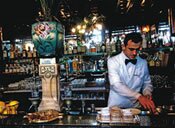 One of the first Gambero Rosso title holders, Mulassano was built in 1879 and remains brimming with art nouveau touches, with the same original nicotine-stained mahogany of the pre-smoking ban. It also claims to be the birthplace of Carpano Vermouth, a drink so ubiquitous in Turin that most bars stock a healthy array of the stuff next to their coffee cups.
One of the first Gambero Rosso title holders, Mulassano was built in 1879 and remains brimming with art nouveau touches, with the same original nicotine-stained mahogany of the pre-smoking ban. It also claims to be the birthplace of Carpano Vermouth, a drink so ubiquitous in Turin that most bars stock a healthy array of the stuff next to their coffee cups.
Due to the inevitable queue outside Mulassano’s, the twin-set brigade opt for the polished marble of Baratti & Milano (29 Piazza Castello, ), famous for its Gianduiotti chocolate and poetic clientele. It is also one of the few remaining cafés to still roast its own house blend of beans. Nowadays, a large proportion of Turin’s cafés serve the city’s most famous export, Lavazza.
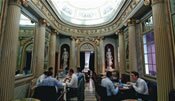 Whereas most brands advertise on the café’s napkins, Lavazza prefers to announce its presence by plastering its infamous artistic calendar shots outside the bars. It’s also doing its bit to promote Turin’s café culture by opening a string of glossy bars and cafés, such as San Tommaso 10 (10 Via San Tommaso, tel. ), along the most populated streets of the city.
Whereas most brands advertise on the café’s napkins, Lavazza prefers to announce its presence by plastering its infamous artistic calendar shots outside the bars. It’s also doing its bit to promote Turin’s café culture by opening a string of glossy bars and cafés, such as San Tommaso 10 (10 Via San Tommaso, tel. ), along the most populated streets of the city.
Things are slightly different in the medieval area of the city, the Quadrilatero. This zone, once affiliated with crime and clandestini (illegal immigrants), is very much the new Turin. Home to Europe’s largest outdoor market and a largely Moroccan community, it has seen its cafés and restaurants gain in popularity.
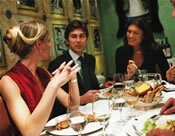 Failing to visit Caffè Confetteria Al Bicerin (5 Piazza della Consolata, ) would be like passing through the Aegean Sea and not trying ouzo. Another of the Gambero Rosso set, the café can count some of the leading lights of the European intelligentsia, including philosopher Friedrich Nietzsche, among its former customers. Run entirely by women, this candlelit, mahogany-panelled, red velvet-smothered den created bicerin over a century ago – a terrifyingly rich concoction of dark chocolate, thick cream and robust espresso layered up like millefeuille which, I’m sternly told by Maritè Costa who has run the café since 1983, “must never, ever be stirred”.
Failing to visit Caffè Confetteria Al Bicerin (5 Piazza della Consolata, ) would be like passing through the Aegean Sea and not trying ouzo. Another of the Gambero Rosso set, the café can count some of the leading lights of the European intelligentsia, including philosopher Friedrich Nietzsche, among its former customers. Run entirely by women, this candlelit, mahogany-panelled, red velvet-smothered den created bicerin over a century ago – a terrifyingly rich concoction of dark chocolate, thick cream and robust espresso layered up like millefeuille which, I’m sternly told by Maritè Costa who has run the café since 1983, “must never, ever be stirred”.
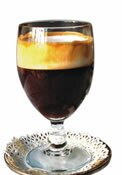 Although a single glass of bicerin will keep you going for the best part of the morning, head further into the Quadrilatero and you’ll find yourself at arty haunt Pastis (9 Piazza Emanuele Filiberto, ). Named after the French aniseed liqueur, the café’s presence is a nod to how deep the Gallic influence goes. A quick cappuccino here, or a pastis (depending on how late in the day it is), and you’ll be set up for an hour or two in the marketing hub of Borgo Dora, which also hosts the Il Balôn flea market on Saturdays.
Although a single glass of bicerin will keep you going for the best part of the morning, head further into the Quadrilatero and you’ll find yourself at arty haunt Pastis (9 Piazza Emanuele Filiberto, ). Named after the French aniseed liqueur, the café’s presence is a nod to how deep the Gallic influence goes. A quick cappuccino here, or a pastis (depending on how late in the day it is), and you’ll be set up for an hour or two in the marketing hub of Borgo Dora, which also hosts the Il Balôn flea market on Saturdays.
Grab an espresso or one of Turin’s famously thick hot chocolates at Il Brillo Sparlante (12 Via Borgo Dora) while you watch the antiques dealers flog their battered wares outside. Bring some change and a bag and you’ll go home laden with bargains. Just obey the strict territories between café and market and you’ll fit right in.
FR Le plein de grains
Turin, le lieu d’origine de la culture italienne du café, recense le plus grand nombre de cafés par habitant de toute l’Italie. Turin connaît un climat semi-alpin – frais, vivifiant et humide. L’enjeu essentiel est donc de rendre les intérieurs les plus douillets possible, pour pouvoir passer agréablement l’hiver.
Caffè San Carlo (156 Piazza San Carlo, tél. 8) est sans doute le café le plus important historiquement de la ville. C’est ici que se sont tenues, en secret, les discussions sur l’unification de l’Italie au milieu du 19ème siècle, et certains historiens sont persuadés que sans l’omniprésence de ces cafés, le pays serait encore divisé.
C’est au Caffè Mulassano (15 Piazza Castello, tél. ) qu’est né le vermouth de Carpano, et ici les règles sont strictes: grappa avant le lunch, pas de lait après 11h, et il vaut mieux vous y tenir sous peine de devoir affronter les regards désapprobateurs des locaux.
Baratti et Milano (29 Piazza Castello, tél. 8) reste l’un des rares cafés à toujours torréfier ses propres variétés de grains.
Manquer une visite au Caffè Al Bicerin (5 Piazza della Consolata, tél. 5) serait comme passer par la mer Égée sans goûter un ouzo. Entièrement géré par des femmes, le café a créé le bicerin il y a plus d’un siècle ; une riche concoction de chocolat noir, de crème épaisse et de fort expresso, le tout réparti en couches successives à la manière d’un millefeuille.
Continuez votre tour dans le Quadrilatero et vous tomberez sur Pastis (9 Piazza Emanuele Filiberto, tél. 085), qui doit son nom à l’apéritif français bien connu à l’anis. Ce café est un hommage aux influences gauloises très appréciées dans cette ville francophile. Ici, prendre un rapide cappuccino équivaut à s’installer pour une heure ou encore flânez dans le quartier à la mode de Borgo Dora (le marché aux puces Il Balon les week-ends). Emportez de l’argent liquide et un grand sac, vous reviendrez avec des tas de bonnes affaires.
NL Een handvol koffiebonen
Turijn, de geboorteplaats van de Italiaanse koffiecultuur, heeft het grootste aantal cafés per inwoner van Italië. Turijn heeft een semi-alpenklimaat – zuiver, fris en vochtig. Het is er zaak om het binnenshuis zo gezellig mogelijk te maken, zodat je er in de winter optimaal van kunt genieten.
Caffé San Carlo (156 Piazza San Carlo, ) is misschien wel het historisch belangrijkste café van Italië. In het midden van de 19e eeuw werden er geheime gesprekken gehouden over de eenmaking van Italië. Sommige historici beweren zelfs dat het land nu nog steeds verdeeld zou zijn als cafés niet zo alomvertegenwoordigd waren.
Caffe Mulassano (15 Piazza Castello, tel. ) is waar Carpano vermouth ooit het daglicht zag. De regels zijn er klaar en duidelijk: grappa voor de lunch en geen melk na 11u ’s ochtends, en je kunt ze maar beter gehoorzamen of je krijgt vernietigende blikken van de lokale vaste klanten toegeworpen.
Baratti and Milano (29 Piazza Castello, ) is een van de weinig overgebleven cafés dat nog steeds zijn eigen huismerk van koffiebonen brandt.
Niet langsgaan in Caffe Al Bicerin (5 Piazza della Consolata, ) is hetzelfde als de Egeïsche eilanden bezoeken en er geen ouzo proeven. Het café wordt uitsluitend door vrouwen uitgebaat en heeft meer dan een eeuw geleden bicerin uitgevonden. Dat is een rijk brouwsel van zwarte chocolade, volle room en een stevige espresso, geserveerd in laagjes zoals millefeuille.
Trek dieper in het Quadrilatero en je vindt er Pastis (9 Piazza Emanuele Filiberto, 5). Het café werd genoemd naar de Franse likeur met anijssmaak en is een knipoog naar de stevige Gallische invloed op de Fransgezinde stad. Bestel hier een straffe cappuccino en je hebt voldoende energie voor een uurtje in het marktcentrum van Borgo Dora (de Il Balon rommelmarkt tijdens het weekend). Breng wat kleingeld en een tas mee, en je keert gegarandeerd met een heleboel koopjes huiswaarts.
Leave a Reply
